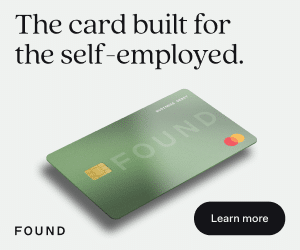Note: This article contains legal advice. We recommend you consult a lawyer before making legal decisions in your business.
Retainers seem super complicated if you’ve never done them before. I know I used to be afraid of them because they seem like these big, scary monsters you just don’t know how you’ll tame.
Then you get one or two under your belt, and you realize while they do have their complications (like any client relationship, retainer or not), they’re really not as bad as you think.
So if you’re interested in taking your business this direction, here are some important tips for you to think about. You can also review our in-depth guide to freelance retainers for more.

Get Weekly Freelance Gigs via Email
Enter your freelancing address and we'll send you a FREE curated list of freelance jobs in your top category every week.
Let’s start with tips on agreements (because those are very important for retainers), then talk about marketing / getting clients.
Cool? Then onward we go.
How to create a simple agreement
I’m not a lawyer, so I won’t dish out advice on the specifics of what your agreement should / shouldn’t say, but there are some great sample agreements out there for retainer-based relationships.
A quick Google search should give you something to work with (Google: “agreement for services on retainer” or something similar).
Edit it up to include what you’d like – but don’t for a second think this is set in stone. Some clients have been burned in the past, and they will want a LOT of changes to your agreement to cover themselves.
Actually, this often takes the longest amount of time out of anything – just getting the contract to a point where both sides can say yes.
(Need help with client negotiations? Check out: How to negotiate with clients (or anyone) like a pro this year)
You might have to bend on some areas you weren’t expecting, but in a good contract, both sides end up doing that.
The simplest retainer-based agreement is…
…an hourly agreement.
It’s very simple: your client pays for a specific number of your hours every month at a discounted rate. (If your business is at rockstar-level though, you might not have to discount it.)
They buy X hours, you work X hours.
Simple. Not many moving parts.
I’d recommend getting your feet wet with this hourly model first.
The most complicated retainer model
(Word from the wise: stay away until you’re more experienced.)
This would be an agreement for a certain number of projects to be completed. After all, that brings up a lot of questions / gray areas:

- How large is each project?
- Will all projects be the same size / complexity?
- What happens if I’m late?
- What happens if I’m late because the client wouldn’t give me feedback / project materials in a timely manner?
- What happens if the client suddenly throws a much larger project at me than initially agreed upon?
- And many, many more.
If the client is paying you $X each month to deliver Y amount of projects, you have to get super specific about what those projects look like in the agreement.
Otherwise, in theory, they could throw 100 huge projects at you, expect them for the same price, and expect them by the end of the month…and there’s nothing in the contract stopping them.
That’s probably the only situation where freelance retainers are scary.
But if you reference a sample project and state complexity / size will be relative to that project, that’s a good starting point (again, consult with a lawyer for exact wording / best practices).
If a client insists on this project-based model, I wouldn’t turn away out of fear of the more complex agreement, but just make sure you play the agreement very safe and answer all of the questions above and then some.
The “coolest” model (but full of gray areas)
Some might disagree with me here, but I like the model where both sides feel comfortable with each other, a price is agreed upon, and both parties play it by ear as to what will get accomplished every month.
This normally only works after you’ve worked with a client for a long time, and there’s a lot of trust and rapport between you.

You have to trust that they won’t try to take advantage of your time, and they have to trust that you’ll actually work as much as you say you will.
This is also a simple contract. The client is paying you $X for a reasonable amount of work to be determined on a monthly basis.
The easiest way to get retainer clients
First, start with the lowest hanging fruit: your current clients.
Is there anyone who just seems to have a constant, non-stop stream of work?

If so, they’re your best bets for retainers. The conversation is very simple:
Hey, you guys have a lot of work that needs to get done every month, and I’m sure you have even more you just haven’t gotten around to yet. Would you like to get it all done and save a bunch of money at the same time?
That’s the nuts and bolts of it.
Here are some selling points to help present your case, too:
- Don’t have to worry about billing anymore. They can send you whatever projects they want, and you’ll work on them for the agreed upon hours every month. They know exactly what each month will cost, so there are no surprises.
- You’re more “on call.” They’ll have even quicker and easier access to you as you’ll be working more closely together.
- They can finally get to those projects they’ve put on the shelf because you’ll be getting a lot more done for them.
(More selling points below as we counter objections.)
How to get new clients after you’ve tapped your current ones
Next, you want to take the same marketing approach I suggest for any service (check my past posts for examples and more in-depth info).
Basically:
- Create a page on your website dedicated to it.
- Fill that page with great copy selling the benefits, and countering potential objections.
- Add testimonials to that page (don’t have to be retainer-based ones right off the bat, just testimonials talking about how great you are to work with, etc.).
- Make the call to action a simple “let’s talk and see if this is right for you” kind of thing.
PS – Retainers are scary for clients, too. Make the first step to getting started an easy, pain-free one.
Also, I wouldn’t suggest listing prices, as you will likely negotiate differently with different clients. For pricing, add a blurb that pricing depends on exactly what they need, so their best bet is to schedule a call to talk about their needs.
Finally, drive targeted traffic to it. Your best bet for traffic is Google Adwords to get off and running.
(Read more here to get started: How to get more new clients ASAP with Google Adwords Express)
If you’re an SEO whiz, then you can take that route, too, but that’s probably more of a long-term plan as SEO can take a good bit of time to generate results.
The second-easiest way to get new clients
Next, send out an email to your list of clients and prospects and let them know you now offer retainer-based relationships.
Keep the email short and sweet, and direct people to click to learn more.
When they click, they land on your new retainer-based relationships website page. Then, your website does the rest.
Countering objections
Now that I think about it, there’s really just one big, glowing fear you might get from clients:
What if I don’t have enough work for you in a given month to justify the cost?
For clients who already give you a lot of work, your answer is:
By the looks of things, I don’t think you guys will have that problem! But I understand the concern. If a month like that ever happens, I’m sure we can think of some way to put my talents to use to help you guys – including projects you may have shelved because you haven’t had time up until now to get them done. Does that sound good?
For newer clients, your answer is:
That’s a very understandable concern. There are a couple things we can do if that ever happens: 1) Create a list of projects you’ve been wanting to get to but just haven’t had the time. That way, if there’s ever a “down” month, we can get to work on them. 2) If you don’t have a list like that, we can make one!
There are tons of ways to market yourself, and we can just start knocking them off one by one. My goal is not to get paid for not doing work. My goal is to get paid for helping you grow. So we’ll always figure out a way to do that, okay?
However, you might not encounter this at all. It’s just good to have that answer in your back pocket in case you do.
Your agreement should cover the rest of the objections / concerns, such as:
- Cancellation policy
- Accountability
- Providing feedback / project materials in a timely manner
- Cost
- How payment is delivered
- What happens if payment isn’t delivered
- What happens if they drop the ball
- What happens if you drop the ball
- Etc.
A few closing thoughts
This ended up being quite a bit longer than I expected 😉 Thanks for hanging in there.
I think retainers are nice because:
1) if your business model is strictly “per-project”… you basically have to re-build your entire business every month, and hope past clients will re-order.
If you’re a rockstar at marketing, that might not be an issue for you. But if you’d like some security, retainers could be great.
2) They provide the opportunity to generate passive income. If you can find a great freelancer who works at a lower hourly rate to help with the work, then really, your full time job can be selling retainers while they do the work 😉
Just something to think about.
But anyways, if you’ve been toying with the idea of starting some retainers, I hope this helps you out.
Let me know your thoughts in the comments. As always, I would love to hear them.
Keep the conversation going...
Over 10,000 of us are having daily conversations over in our free Facebook group and we'd love to see you there. Join us!




Hey David!
How would you figure out the pricing model for this. For example, if my current project rate is based on $100/hr…. then what percentage of that do i chop down in order to get them on retainer (ie $60/hr, $70/hr?)
Hi David, I’m reaching out to you because I wanted to thank you “personally” more like digitally!
This specific blog really inspired me and it made a click on me.
Today is my last day as a full-time employee, I have done many jobs on the side like many designers and always wanted to expand but I was afraid. I have a 20-month-old and another baby coming up this summer but I felt like I needed to take the jump before life unfolds more you know.
I locked in a client on a retainer and I took that as a jump-start, I have other clients that are coming as project based so that may and I think will work amazingly!
Thank you for sharing your experience, your point of view and I hope I can also be of inspiration to others like you were to me through this blog piece.
God Bless you, your family and career!
Shalom!
www.studio316.ca
Thanks, this is a great article. I’ve always avoided retainers as I believed either I or the client would be losing out, but I can now see the advantages for both sides. Cheers 🙂
Thanks for your great insights David. You really give a great overview on the whole – and often confusing – topic of retainers!
I have a few clients on a retainer now and at first I was super confused by it, but now I prefer it to other methods.
I’ve not really considered a retainer based business but this does sound interesting! It seems it would take a lot of the variance away when it comes to my “per project” based income.
Can you recommend a “block of hours” to sell for the retainer or would this just depend on the client? If it depends on the client, you still have those new clients that you don’t have a history with to help you determine how many hours to sell. What would you suggest there?
Thanks again for another great article.
Hey JD!
I think it depends entirely on the client, as well as what you charge, terms of the agreement, etc. In my experience you kinda go into retainer talks with a certain “way” of doing things, and then that quickly gets thrown out the window as you discuss parameters and needs with the client.
Sorry, I don’t understand your follow up question:
“If it depends on the client, you still have those new clients that you don’t have a history with to help you determine how many hours to sell. What would you suggest there?”
Would you mind elaborating?
Thanks for your comment 🙂
David
Yeah. What I was meaning was with clients you have worked with before, you can kind of have a game plan together. You’ll know this person’s general work load and can kind of tailor your proposal to that.
However, with new clients, you don’t have that knowledge so what kind of “package of hours” would you suggest selling?
I hope that makes sense. Maybe I’m over complicating things. 😉
Oh, gotcha 😉
I would…
Ask them what they need help with most, assess the projects, estimate hours to complete, add extra hours because things always go wrong / feedback process, ???, profit 🙂
Does that answer your question?
Absolutely. Thanks a lot for the insight!
What do you recommend when they go way OVER their retainer?
Hey Sarah,
Couple questions for you…
Does your contract stipulate what happens in the event that what they ask exceeds what you provided, and you just need help enforcing it?
Or is there no language in your contract discussing what happens if they go “over”?
And finally…
Is this for an hourly-based retainer or project-based?
If you can answer those I can better help you.
Thanks for your question 🙂
David
So far I’ve only tried to propose one retainer but it was so far out of the client’s budget I knew it was a no-go. I’m on a per project basis with my clients right now, but as soon as I complete a project and they’re happy with it, I pitch them for a new one right away. Thanks, David, your writing is very helpful!
Hey Sharon,
Very cool 🙂 Thanks for sharing.
David